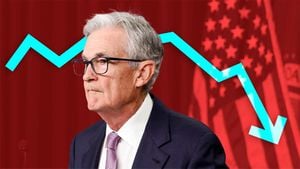Eastern Equine Encephalitis, or EEE, is making headlines once again as reports of it surface across various towns in New England, bringing both concern and action from local health authorities. This mosquito-borne virus, which is quite rare, poses significant risks, including death, particularly for humans and horses. The situation has prompted officials to take actions reminiscent of past public health measures — something many residents are not eager to relive.
Recent developments unfolded when health authorities confirmed the first human case of EEE since 2020, which involved an elderly man from Worcester County, Massachusetts, who had been hospitalized. Shortly after, it was revealed this month's emergence of EEE has led to the death of Steven Perry, aged 41, from Hampstead, New Hampshire. Perry's family described him as healthy with no underlying conditions, making the rapid deterioration following his infection particularly alarming. The last reported case of EEE prior to this summer was nearly ten years ago, highlighting its rarity but also the gravity of its potential impact.
According to the Massachusetts Department of Public Health, four towns—Douglas, Oxford, Sutton, and Webster—were raised to “critical risk” status, urging residents to seek preventative measures against mosquito bites. This includes avoiding outdoor activities during dusk and dawn when mosquitoes are most active. Health officials strongly recommend using insect repellent, wearing long sleeves, and ensuring stagnant water around homes doesn’t become breeding grounds for these pests.
Oxford, home to the recent EEE case, enacted voluntary curfews aimed at curtailing outdoor activity after sunset. Residents are urged to excuse all outdoor events by 6 p.m. during September and then 5 p.m. throughout October until the first frost arrives. Such decisions stirred substantial discontent among some locals, as they drew parallels to the lockdown measures enforced during the Covid pandemic. The town hall meeting drew about two hundred residents, many expressing their frustrations at what they perceive as overreach.
Philip Davis, president of the local Little League, captured the sentiment when he stated, “Living scared is no way to live.” Such sentiments echo the frustrations from the lockdowns endured during the pandemic, underscoring how recent public health measures have affected community attitudes toward official recommendations.
Despite this pushback, health officials remain steadfast. Rike Sterrett, Oxford’s director of public health, emphasized their responsibility to protect public health, firmly declaring, "At the end of the day, the Board of Health’s job is to protect public health, and there is EEE in Oxford. It’s very serious illness, and we don’t want anyone else to get sick.” The urgency behind this response is underscored by the mortality rate tied to EEE, which hovers around 30% for infected individuals. Survivors often face long-term neurological issues, leading to understandable public concern.
Neighboring towns are not standing idly either. Health officials have started aerial pesticide spraying, targeting areas with high mosquito activity. The insecticide, Anvil 10+10, is applied via ultra-low volume sprays. Officials assert the method is efficient and minimally invasive for human health, asking people with respiratory issues to remain indoors during applications.
Despite these countywide efforts, residents have remained divided on the measures being implemented. Some are clearly frustrated with the curfews and restrictions, citing previous experiences during the pandemic, and demanding more autonomy over daily decisions. Others view these precautions as necessary actions to avert potential tragedies from the disease.
While EEE is not as persistent a threat as other viruses such as West Nile, scientists warn climate change may exacerbate conditions conducive to the spread of such diseases. Warmer temperatures and shifting wildlife patterns could see mosquitoes proliferate, increasing encounters with the virus.
Overall, the emergence of EEE has not only rekindled concern over public health practices but also catalyzed community discussions around personal freedoms during health crises. This complicated interplay of safety and individual rights remains central as local governments navigate managing this rare but deadly pathogen.
With Labor Day approaching, these officials hope to mitigate risks pooling around community gatherings often held during the afternoon and evening hours. They’re urging adult supervision along with the use of repellents for children, stressing the importance of community wellness against the growing threat of zoonotic diseases, like EEE, which linger on the fringes of awareness yet can surge dramatically.



